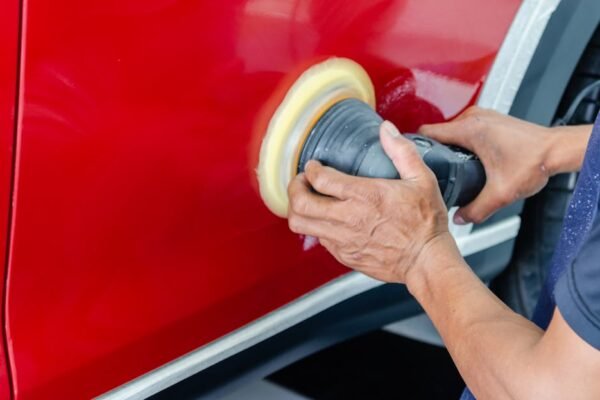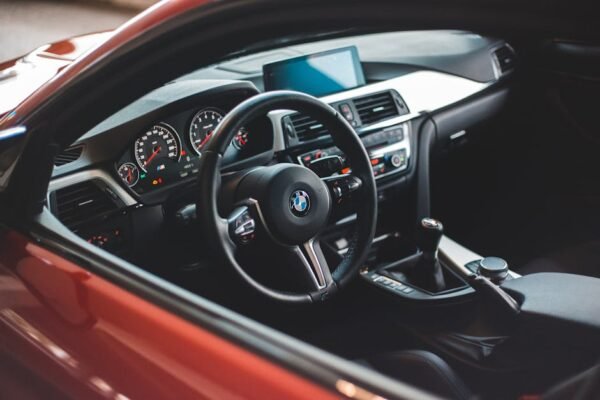The Allure of Classic Cars
{“type”:”img1″,”src”:”https://mostmotors.com/wp-content/uploads/2024/03/fileUpload-46.jpg”,”alt”:”classic cars at an exhibition”}Classic cars hold a unique place in automotive history, embodying the innovation, style, and spirit of their times. From the sleek designs of the 1960s to the muscle power of the 1970s, each classic car tells a story. These vehicles are more than just modes of transport; they are moving pieces of art, steeped in nostalgia and charm.
The allure of classic cars isn't just in their aesthetic appeal but also in the legacy they carry. To own a classic car is to own a piece of history. Enthusiasts and collectors worldwide cherish these vehicles not only for their beauty but for the sense of identity and continuity they provide.
But what makes a car a 'classic'? Is it simply its age, or is there more to it? At its core, a classic car is one that has stood the test of time, offering something beyond ordinary. Whether it's groundbreaking design, superior craftsmanship, or an innovative engine, classic cars have a distinguishing feature that sets them apart.
Moreover, the community around classic cars is vibrant and passionate. Clubs, exhibitions, and auctions dedicated to these vehicles offer a way for enthusiasts to share their love and knowledge, preserving these iconic machines for future generations to admire.
In this blog post, we'll dive into the world of classic car icons, exploring their history, significant models, and the enduring legacy they have left on the automotive world.
The Golden Era of Automobiles
The mid-20th century is often referred to as the Golden Era of Automobiles. During this period, manufacturers experimented with bold designs, powerful engines, and innovative features, setting the standard for what would become classic cars.
One significant factor of this era was the emphasis on performance and luxury. Cars were no longer just practical vehicles; they were symbols of status and personal expression. This shift led to the production of some of the most memorable cars in history, including the sleek Jaguar E-Type, the powerful Chevrolet Corvette, and the iconic Ford Mustang.
These classic cars were not only beautiful to look at but were also engineering marvels of their time. The introduction of features like power steering, disc brakes, and improved suspension systems changed the driving experience, making cars more comfortable and safer to drive.
Collectors and enthusiasts often cite the innovative spirit of this era as a significant reason for their fascination with classic cars. The blend of form and function, along with the stories attached to these vehicles, makes them cherished collectibles.
Understanding the context and the advancements of the Golden Era helps us appreciate why these cars are revered and why they continue to captivate the hearts of people worldwide.
Iconic Classic Cars and Their Stories
{“type”:”img1″,”src”:”https://mostmotors.com/wp-content/uploads/2024/03/fileUpload-47.jpg”,”alt”:”vintage sports cars”}Among the pantheon of classic cars, some models stand out for their impact on automotive design and culture. The 1960s Jaguar E-Type, for instance, is often celebrated for its stunning design and performance. Enzo Ferrari himself called it 'the most beautiful car ever made.'
The Ford Mustang, launched in 1964, became an instant classic with its sporty design and powerful performance. It embodied the spirit of freedom and adventure, becoming a symbol of American car culture.
Another icon, the Chevrolet Corvette, known as 'America's Sports Car,' has been in continuous production since 1953. Each generation of the Corvette has pushed the boundaries of technology and design, making it a perennial favorite among enthusiasts.
The Italian masterpiece, the Lamborghini Miura, introduced in the late 1960s, marked the advent of the supercar era. Its mid-engine design and breathtaking speed set a new standard for high-performance sports cars.
These cars and others like them are not just vehicles; they are milestones in automotive history. Their stories of innovation, triumph, and sometimes tragedy, resonate with car enthusiasts around the globe, making them timeless icons of culture and technology.
Restoration and Preservation
The restoration and preservation of classic cars are vital aspects of keeping automotive history alive. Restoring a classic car to its original glory requires expertise, patience, and a love for the craft. It's a way to honor the engineering and aesthetic beauty of these remarkable vehicles.
Preservation, on the other hand, focuses on maintaining the car's existing condition, preventing further decay. This approach is often preferred for rare models, where maintaining originality is crucial.
Both restoration and preservation require a deep understanding of the vehicle's history, design, and construction. Enthusiasts invest considerable time and resources to ensure these cars are cared for properly, often resorting to hunting down original parts and employing traditional techniques to maintain authenticity.
The process is not just about maintaining a car; it's about preserving a piece of history. Each classic car restored or preserved is a testament to the era it represents, offering future generations a glimpse into the past.
The dedication of classic car enthusiasts ensures that these treasures of the automotive world will continue to be celebrated and admired, keeping the legacy of classic cars alive for years to come.
Investing in Classic Cars
For many, classic cars represent a unique investment opportunity. Unlike traditional investments, classic cars offer the joy of ownership and the potential for appreciation. The market for classic cars has seen significant growth, with some models experiencing a substantial increase in value over time.
Investing in classic cars requires knowledge and research. The rarity, condition, and originality of the vehicle are critical factors in determining its value. Enthusiasts often look for models with a strong history, limited production numbers, and in the best condition possible.
However, it's essential to approach classic car investment with caution. The market can be volatile, and maintaining and storing classic cars can involve considerable expense. But for those with a passion for automotive history and an eye for detail, investing in a classic car can be a rewarding experience.
Whether for personal enjoyment or as an investment, classic cars capture the imagination and evoke a sense of nostalgia and admiration. Their legacy in automotive history is undeniable, offering insight into the innovation and aspirations of their time.
In conclusion, classic cars are more than just old vehicles; they are icons of design, engineering, and culture. Their preservation and restoration are essential to keeping our automotive heritage alive, allowing future generations to experience the art and innovation of the past.





